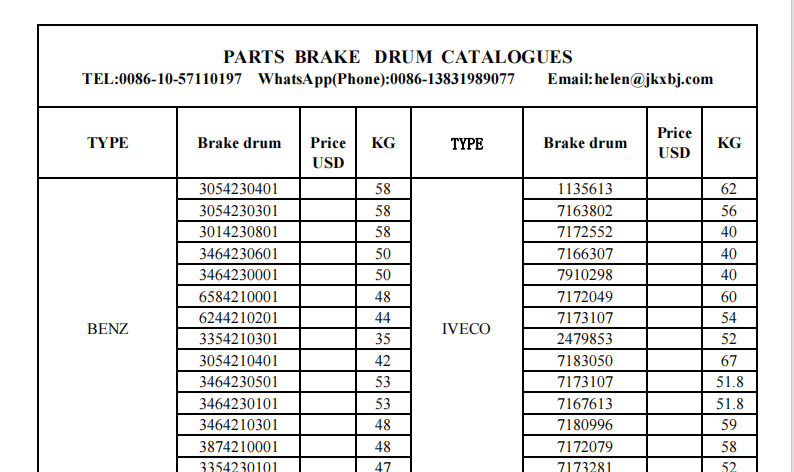Sep . 11, 2024 11:38 Back to list
Expert Brake Drum Repair Services | Quality & Reliability
Brake Drum Repair Ensuring Vehicle Safety and Performance
Brake drums are a crucial component of a vehicle's braking system, particularly in vehicles equipped with drum brakes. Over time, these parts can wear out or become damaged, necessitating repair or replacement to maintain optimal braking performance. Understanding the importance of brake drum maintenance and repair can significantly enhance vehicle safety, compliance with regulations, and driving efficiency.
Understanding Brake Drums
Brake drums work by using friction to slow down or stop a vehicle. When the brake pedal is pressed, brake shoes inside the drum are pushed outward against the inner surface of the drum. This friction generates the necessary force to slow down the vehicle. However, continuous use can lead to wear and tear, resulting in issues such as warping, cracking, or scoring on the drum’s surface. These problems can negatively impact braking efficiency and pose safety risks.
Signs of Brake Drum Wear
Recognizing the signs of wear is essential for timely repairs
. Common indicators include1. Squeaking or Grinding Noises Unusual sounds when braking can signify worn brake shoes or damaged drums. 2. Vibration If the brake pedal shakes or vibrates while stopping, the drums may be warped. 3. Decreased Performance A noticeable reduction in braking power could indicate that the drums need attention. 4. Visual Damage Cracks, grooves, or discoloration on the drum surface can indicate serious wear.
The Repair Process
When addressing brake drum issues, a thorough inspection is the first step. A professional mechanic will evaluate the condition of the drums, inspect the brake shoes, and assess the entire braking system. If the drums are slightly worn, they may be resurfaced to restore a smooth surface. However, if they are excessively damaged, replacement may be necessary.
brake drum repair

The resurfacing process involves removing a small layer of the drum’s surface to eliminate imperfections. This makes it smoother and can prolong its life. It’s important to note that there are limits to how much material can be removed; if the drums are already below the manufacturer’s minimum thickness specifications, replacement is the safest option.
Choosing the Right Parts
When it comes to brake drum replacement or repair, choosing the right parts is crucial. Aftermarket components can be less expensive, but they may not offer the same quality or longevity as OEM (Original Equipment Manufacturer) parts. Opting for high-quality materials can provide better performance and improve safety in the long run.
Maintenance Tips
Regular maintenance can extend the life of brake drums. Here are some tips
- Regular Inspections Have your braking system inspected regularly, ideally during routine service checks. - Brake Fluid Checks Ensure that the brake fluid is at the appropriate level and not contaminated. - Driving Habits Avoid sudden stops and heavy braking whenever possible to reduce strain on the brake system.
Conclusion
Proper brake drum repair and maintenance are vital for ensuring vehicle safety and performance. By staying aware of the signs of wear and acting promptly, vehicle owners can avoid more extensive damage and keep their braking systems in top condition. Remember, a well-functioning braking system is not just about convenience; it plays a critical role in the overall safety of you and your passengers on the road.
-
Scania Brake Drums: OEM Quality for Optimal Safety & Durability
NewsAug.16,2025
-
R.V.I: Advanced Remote Visual Inspection for Precision
NewsAug.15,2025
-
Discover HYUNDA: Innovative Vehicles, Equipment & Solutions
NewsAug.14,2025
-
R.V.I: Unlock Advanced Insights & Real-time Performance
NewsAug.13,2025
-
Kamaz Brake Drum: Durable & Reliable for Heavy Duty Trucks
NewsAug.12,2025
-
Heavy Duty Iveco Brake Drum - Premium Quality & Safety
NewsAug.11,2025
